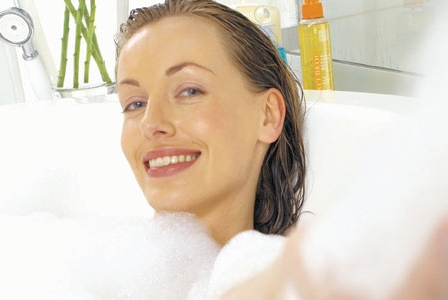
Adding nutrients like essential fatty acids and antioxidants to our diets can take us a long way toward recreating youthful, healthy skin. Your choice of moisturizer can also have a huge impact on your skin quality.
Adding nutrients like essential fatty acids and antioxidants to our diets can take us a long way toward recreating youthful, healthy skin.
Your choice of moisturizer can also have a huge impact on your skin quality. As the name implies, a moisturizer helps attract or trap water in the skin, and if you need to use a moisturizer, it’s best to use one already present in the skin.
Moisture Booster
Hyaluronic acid (HA) is a natural polysaccharide located in the connective tissue between collagen and elastin fibres and in the topmost skin cells. Part of the glycosaminoglycan family, HA helps hold cells together, providing structural support to the skin while retaining precious moisture. HA is a humectant, which means that it draws water into the skin from both the bloodstream and the environment. Often described as a “molecular sponge,” HA can hold up to 1,000 times its weight in water. It’s no wonder that skin starts to plump, fine lines flatten, and deeper wrinkles become less noticeable when you use HA.
Hyaluronic acid is a conditionally essential nutrient; our bodies produce plenty of it when we are young, but supply doesn’t keep up with demand as we age. You need only think of a baby’s soft, plump skin to see the benefits of having a plentiful supply. As we age, however, our ability to produce this compound weakens until, by the age of 50, we are producing less than half of the HA that we did in our diaper days. Decreasing HA leads to dehydration, loss of skin tone and elasticity, and wrinkles.
From the Outside In
Because there are no food sources proven to increase levels of HA in skin cells, you have to take a topical approach to enjoy its benefits. In cosmetics, hyaluronic acid and its sodium salt (called sodium hyaluronate) are used in moisturizing formulations. But like many nutrients we may try to get into our skin from the outside, in its original form HA is simply too large to be absorbed into the deeper layers of our epidermis.
Instead, creme forms of HA remain on the surface of the skin to provide instant skin softening and smoothing while moisturizing and preventing water evaporation. The ability of HA to lock moisture into surface skin, in fact, makes it an important addition to sun protection cremes, day cremes, and makeup. Vanity aside, HA is also proven to aid in wound repair and has been used to heal surgical incisions, first – and second-degree burns, and various other skin lesions. Traditional animal sources of HA include coxcombs and cattle, but now many formulations are derived from a plant-based bacterial culture. Generally, HA is nonirritating and nonallergenic.
Remember that HA draws moisture into the skin–but it can’t walk to the cooler to get a refill. Be sure to drink eight to 10 glasses of pure filtered water every day to make the most of your HA.









